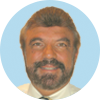Perhaps the most significant portion of the WHO guidelines regarding the general requirements for the practice of acupuncture concern the four levels of training, with educational requirements and core curriculum for each level.
|
Level one identifies those "with little or no formal training or experience in modern Western health care." The entrance requirement for this level is "completion of secondary schooling, university entrance or equivalent and appropriate training in the basic biosciences." In the U.S., this level would include those individuals seeking education in an "acupuncture and Traditional Chinese Medicine school who graduate to become 'acupuncturists.'" This level specifically calls for "two years full-time (2,500 hours) or the part-time equivalent, with not less than 1,000 hours of practical and clinical work." The "Core Syllabus in Acupuncture," specifically written and recommended by the WHO guidelines, includes every one of the individual items common to each specific syllabus of the nine Council on Chiropractic Education (CCE)-recognized chiropractic colleges currently offering postgraduate training in acupuncture.
Level two lays out the guidelines for "full training in acupuncture for qualified physicians." This specifically states: "Qualified physicians who already have adequate knowledge and skills in modern Western medicine, would only need to follow the Core Syllabus for acupuncture. The theoretical course could be shortened, as qualified physicians can learn traditional medicine more easily than those with no prior medical education." The guidelines for level two (full training of physicians) call for 500 hours of theory, 500 hours of clinical and 500 hours of supervised practice.
Level three is specifically categorized as "limited training in acupuncture for qualified physicians." This category is specific to those medical, osteopathic, chiropractic, podiatric, dental and other professionals having attained the degree of "doctor" in the healing arts. This category would include the practice of acupuncture within the scope of their licensed profession and utilized as an adjunct to their usual practice. The guidelines specifically state:
Shorter training courses would be suitable for qualified physicians (and certain other graduates) who wish to become competent in acupuncture as a form of therapy in modern Western clinical practice (or as a subject for scientific research). For them, a brief introduction to traditional acupuncture (derived from the core syllabus) would probably suffice, and the training would then be largely orientated to the use of acupuncture in modern Western medicine. The course should comprise at least 200 hours of formal training and should include the following components:
On completion of the course and after passing an official examination, participants should be able to integrate acupuncture into their clinical work or specialty. |
Every item within the core syllabus as suggested by the WHO guidelines is specific and already established to each of the nine chiropractic colleges offering postgraduate education in acupuncture. This syllabus, and the one for level one, have been in general application for more than 30 years in chiropractic.
7.2 Special Courses
"Some physicians or dental surgeons might wish to acquire proficiency in certain specific applications of acupuncture (for example, pain relief or dental or obstetric analgesia) and for them, flexibility would be needed in designing special courses adapted to their particular areas of interest."
Level four: Relating to the training of primary health care personnel, which consists of allied practitioners, such as physical therapist, dental and medical assistants, nurses, inhalation therapists, and those having direct patient contact who are not "doctors/physicians," the WHO guidelines state: "It would seem wiser ... to train such personnel in acupressure (zhi ya) rather than in acupuncture itself. Training in acupressure would make no great demands, could be incorporated into the general training of primary health care personnel and would carry no risk to the patient. The use of acupressure in primary health care would have to be evaluated after a suitable trial period. Some personnel who show particular aptitude might be chosen for basic training in acupuncture, a training programme being arranged according to the applications envisaged."
Acupuncture, as practiced by qualified chiropractic/medical physicians, is extremely easy to learn and to establish into a clinical practice. It may be practiced with simple electronic stimulation, completely eliminating the need for needle penetration. It is a reimbursable therapy which, when used electronically, is often referred to as transcutaneous electronic nerve stimulation (TENS). It may also be used with needle penetration and referred to as acupuncture. Remember, just like chiropractic, "Acupuncture is a principle, not a technique." It may be utilized by a variety of stimulation modalities.
Recently, a study from the Harvard Medical School revealed that complementary and alternative medicine (CAM) had increased 33% among those 60 years of age and older, 50% among Baby Boomers, and 70% among post-Baby Boomers. Many of these treatments are in the area of acupuncture. It is definitely time for every holistically minded DC to add this important healing therapy to his or her practice - and it is way past time for every state to include acupuncture as part of its scope of practice.
John Amaro, DC, FIAMA, Dipl. Ac, LAc
Carefree, Arizona
Click here for previous articles by John Amaro, LAc, DC, Dipl. Ac.(NCCAOM), Dipl.Med.Ac.(IAMA).





